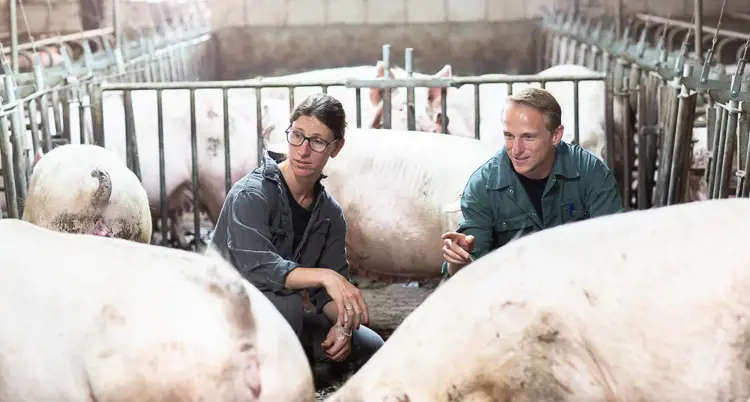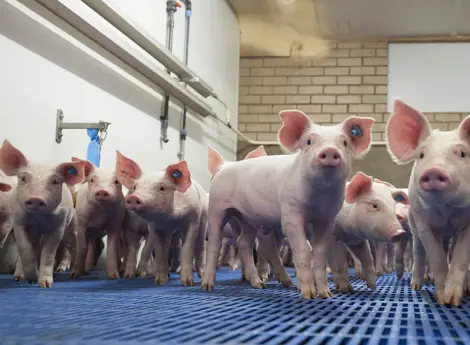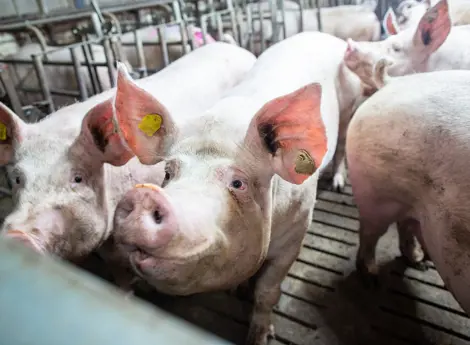Ammonium chloride allowed as feed additive for sows
From now on, the European Union allows ammonium chloride as a feed additive for sows ((EU) 2023/1710). The feed additive is only authorized from the 9th to the 11th week of gestation and from the 15th week of gestation to the 1st week of lactation. During these phases, a maximum amount of 5000 mg/kg is allowed in the sow feed. Ammonium chloride can be used to reduce the dietary electrolyte balance (dEB), depress blood pH, or increase urinary acidity.

Nutritional considerations to take into account:
- As Koudijs, we advise having a higher dEB during gestation to support the storage of calcium and phosphorus in the bones. Therefore, we advise using sodium bicarbonate (5 to 6 kg/mT) in gestation diets to increase the dEB level, and certainly not ammonium chloride.
- In a pre-lactation/transition diet (from the 15th week of gestation until the maximum 1st week of lactation), ammonium chloride could be an option to use. Around farrowing, we aim for a sudden decrease of the dEB level by 50 to 70 mEq to stimulate the mobilization of calcium and phosphorus from the bones into the blood. Although the use of ammonium chloride is not necessary when the gestation diet contains sodium bicarbonate and the pre-lactation/farrowing diet does not, the sudden difference in dEB between these diets is already 50-70 mEq lower.
- Ammonium chloride is probably less detrimental to taste than calcium chloride, although it will also not stimulate intake. Therefore, another reason we do not prefer to use it in diets.
- Be careful when optimizing feeds on the dEB level and ensure the level is implemented correctly for every raw material and mineral source. Also, take into account if (inorganic) sulfate is calculated in the mEq-value formulation or not (see figure 1). Especially with higher dEB requirements, diet optimization programs may pull in more potassium-rich ingredients in the composition. This does not have to be a problem, but be aware that a requirement of the dEB level can affect the diet composition and price. Therefore, it might be easier to simply include 5 kg/mT of sodium bicarbonate in the gestation diet.
- Beware of lowering the dEB level with ammonium chloride in relation to heat stress. Sows with a low dEB diet are more sensitive to heat stress. Sows in heat stress have an increased breathing frequency, which results in a lower bicarbonate (HCO3-) level in the blood as a reaction of the body to increase CO2 levels in the blood, causing even higher breathing frequency (hyperventilation) and lower electrolyte balance, creating a vicious circle. This is another reason why we advise increasing the dEB level of the gestation diet via sodium bicarbonate instead of decreasing the dEB level of the (pre)lactation diet via ammonium chloride.
- Ammonium chloride can decrease urinary pH and can therefore be used for urinary tract infections. But due to the periodic approval of using ammonium chloride, this is an impractical implementation for such kinds of problems. The use of benzoic acid can be an alternative.

Figure 1 Formula of dietary Electrolyte Balance (dEB). Som the elements (gram/kg) per molecular weight. (dEB formula does not calculate with SO42- and C6H5COO-, but have an effect on blood pH level).
About the author

Suzanne Hendrikx
Specialist Swine




